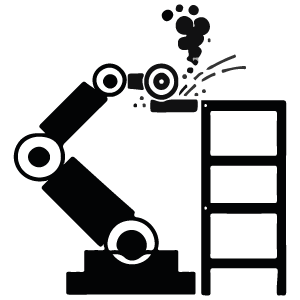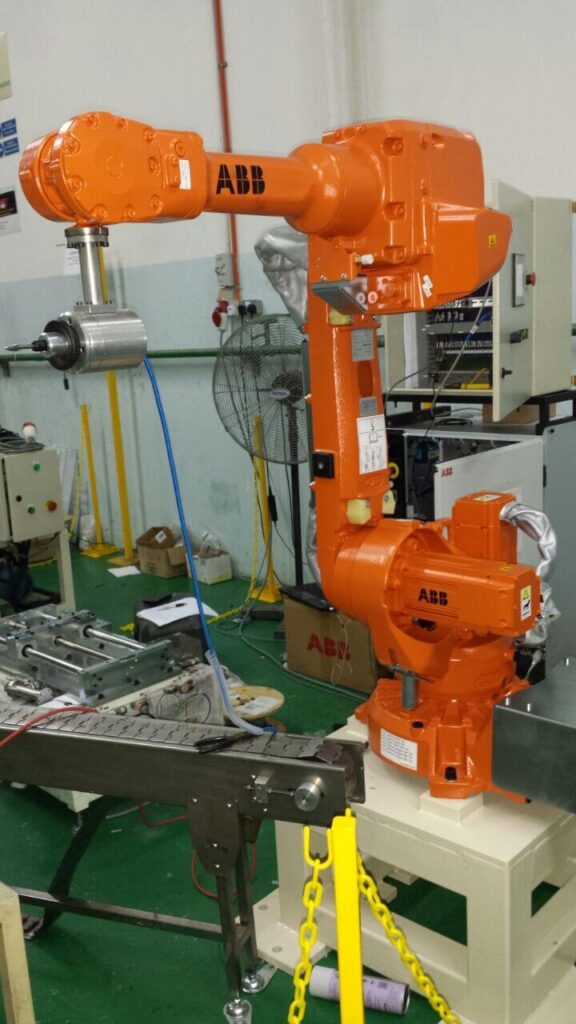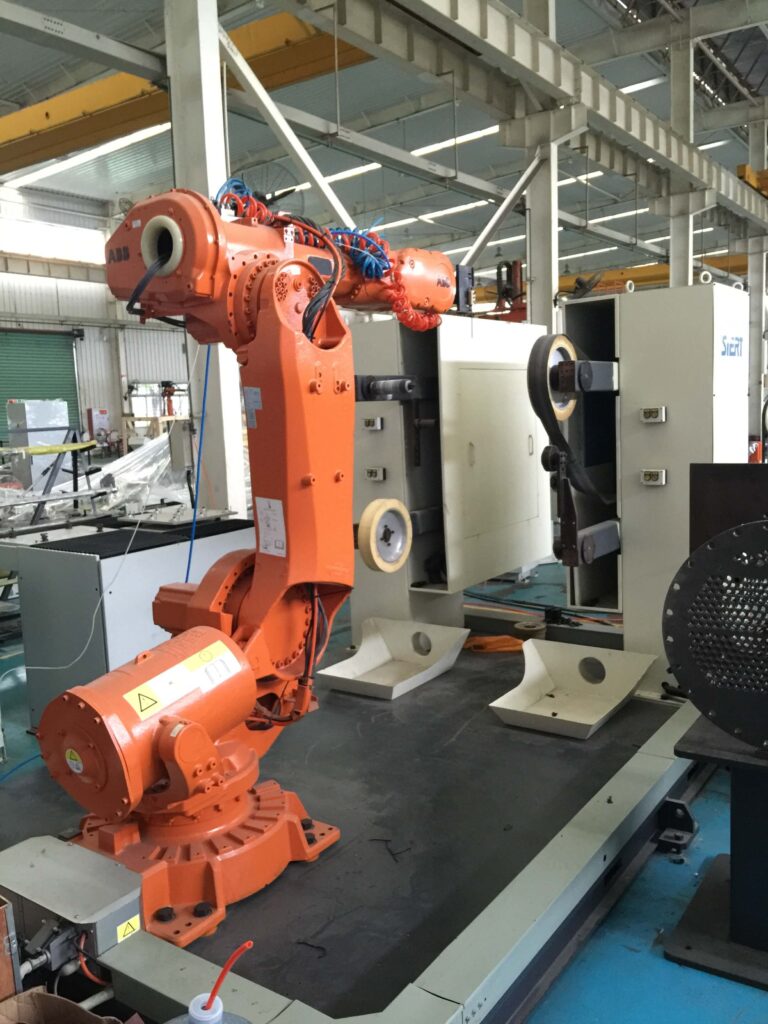Material removal is one of the most unpopular jobs in manufacturing. It is generally hard, heavy work that is also dirty and hazardous, for instance cutting, trimming, deburring, grinding, buffing, finishing and polishing jobs. For this reason, manufacturers struggle to get workers to fill positions but robots can do these jobs exceptionally well, removing excess material from machined or cast parts quickly and efficiently.
Not only will a robot save production time and reduce overall costs, it will also reduce the serious health and safety risks associated with particles getting into workers’ eyes and metal dust penetrating the lungs.
Robots are programed to apply just enough pressure for the job, so that the integrity of each piece is retained and all work pieces kept beautifully uniform. If there isn’t enough pressure, time and materials are wasted, while too much pressure can ruin a part. With properly programed force control a robot will always maintain a constant force while deburring, buffing and polishing, unlike a human who while flexible, is not consist
The robotic grinding and finishing jobs have included:
– Grinding the weld beads and formed edges of welded cases and boxes to create a smooth, blended surface finish.
– Grinding of cast iron water fittings.
– Deburring, drilling and grinding aluminum power steering cylinders and undertaking vision quality checks.
– Deburring of steel pinion gears to the point of applying a chamfer to a beveled gear.
– Deburring pump impellers to remove all sharp edges and to remove high points.
– Deburring trailer hitches.
– Deburring, drilling and polishing rifle receivers.
– Polishing light reflectors as well as post forming and pre-anodizing.
– Machining PVC pipe flanges.
Additionally, we have completed numerous jobs that involved polishing aluminum and deflashing plastics.























